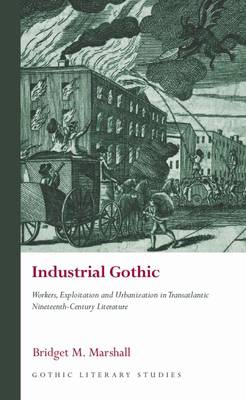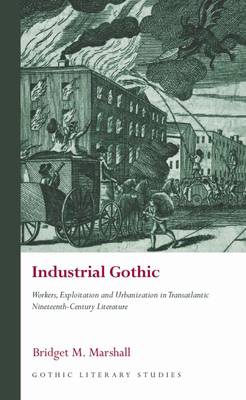
- Afhalen na 1 uur in een winkel met voorraad
- Gratis thuislevering in België vanaf € 30
- Ruim aanbod met 7 miljoen producten
- Afhalen na 1 uur in een winkel met voorraad
- Gratis thuislevering in België vanaf € 30
- Ruim aanbod met 7 miljoen producten
Zoeken
Industrial Gothic
Workers, Exploitation and Urbanization in Transatlantic Nineteenth-Century Literature
Bridget M Marshall
€ 100,95
+ 201 punten
Omschrijving
An archival literary study positing the Industrial Revolution as a site of Gothic excess and horror. Stories about the real horrors of factory life frequently employed the mode of the Gothic, while nineteenth-century Gothic literature began to use new settings--factories, mills, and industrial cities--as backdrops for the horrors that once populated Gothic castles. This study carves out the "Industrial Gothic" as a new area of study that places the literature of the Industrial Revolution in dialogue with the Gothic. The book explores a significant subset of transatlantic nineteenth-century literature that employs the tropes, themes, and rhetoric of the Gothic to portray the real-life horrors of factory life. Using archival materials, Bridget M. Marshall frames the Industrial Revolution as a site of Gothic excess and horror.
Specificaties
Betrokkenen
- Auteur(s):
- Uitgeverij:
Inhoud
- Aantal bladzijden:
- 288
- Taal:
- Engels
- Reeks:
Eigenschappen
- Productcode (EAN):
- 9781786837707
- Verschijningsdatum:
- 6/10/2021
- Uitvoering:
- Hardcover
- Formaat:
- Genaaid
- Afmetingen:
- 140 mm x 218 mm
- Gewicht:
- 498 g

Alleen bij Standaard Boekhandel
+ 201 punten op je klantenkaart van Standaard Boekhandel
Beoordelingen
We publiceren alleen reviews die voldoen aan de voorwaarden voor reviews. Bekijk onze voorwaarden voor reviews.











